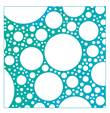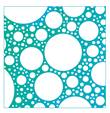|
|
Australasian Colloid and Interface Society Web: colloids-ausnz.au; E-mail: acis.enquiries@gmail.com; LinkedIn |
|
ACIS Newsletter – Issue 33, August 2023
Welcome
Dear Esteemed Members,
Welcome to our 33rd issue of ACIS News! We produce a quarterly newsletter - sent around in February, May, August, and November (approximately) - to keep the wonderful members of ACIS informed of our initiatives and for members to directly communicate with our Society. We publish job announcements, meetings of interests to our society, career development opportunities, any exciting research that you would like to share with us and much more. To everyone up to date with the on-goings in our colloids society, please send your suggestions and items for the next newsletter to christine.browne@monash.edu or Stuart Brown at s3399895@student.rmit.edu.au.
President’s Corner
I am very much looking forward to ACIS2024, 4-7th February in Terrigal, NSW! It is great having a regular conference for our community, both for seeing the exciting research being done in Australia and New Zealand, and for all the conversations. It is also a great opportunity for new students and researchers in our community to meet fellow researchers. If you haven’t gotten your abstracts in yet, please do so! The abstracts close on the 3rd of September. Many thanks to the conference organisers!
On that note, our ACIS and student conferences are an important part of our community. I would like you to consider if you would be willing to be part of the organising committee for the next student conference to be held in ACIS 2025 or for ACIS2026. Similarly, there will be a few positions on the board which will be available early next year. Please start to consider if this is an opportunity you would like to apply for, and there will be more information in the next newsletter.
The ACIS-3MT competition in June was a fun event, and hopefully gave useful feedback to all the students involved. Thanks again to the wonderful volunteers who ran it, and all the judges involved. The board is always keen to run new events, and are open to ideas, so please reach out if you have suggestions.
Tamar Greaves (President)
News
ACIS 2024 Terrigal

Planning is well underway for our next society conference at Terrigal on the NSW Central Coast from 4-7 February 2024. We are regularly adding new content to the website including keynote speakers for each theme. Keep up to date at acis2024.org.
In the program we have themes concerning nanoparticles and nanocrystals, colloids and interfaces in mineral processing, colloids for the delivery of bioactive compounds, and on soft matter and also liquid interfaces together with our traditional Frontiers of colloid and interface science theme to capture the diversity of the latest and greatest discoveries by colleagues from across New Zealand, Australia and the World. Our two plenary speakers are our very own Calum Drummond as the AE Alexander lecturer and Julia Kornfield from CalTech is the ACIS Plenary lecturer.
As our first in person conference with invited speakers since 2019, I encourage you and your colleagues and students to get behind this conference. The call for abstracts is live with a deadline of 3 September. Information for abstract submission can be found here. Earlybird registration is also live.
See you all there,
Erica, George, Stuart, Deb & Maggie
AKRC 2023
12th Australia-Korea Rheology Conference
The 2023 AKRC will be held at the University of Melbourne, Australia between December 4th-7th, 2023. The conference will celebrate the 40th anniversary of the ASR. The conference program includes the ASR Medallion Lecture from joint awardees Profs Peter Daivis and Billy Todd, as well as a Special Session on suspension rheology celebrating Prof. Roger Tanner's 90th birthday. We invite submissions for regular presentations and poster presentations. The abstract submission deadline is 27th August. More details on abstract submission and registration are available on our website (https://www.rheology.org.au/conferences/akrc2023).
We hope to see you there!
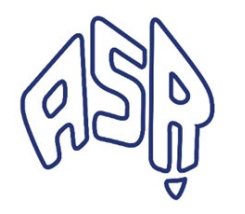

European Colloid & Interface Society
Save the date - ECIS 2024 will be held in Copenhagen 1st – 6th September 2024
Chairs: Ben Boyd and Jacob Kirkensgaard
Venue: Scandinavian Falkoner, Falkoner Alle, Frederiksberg
Website: ecis2024.org
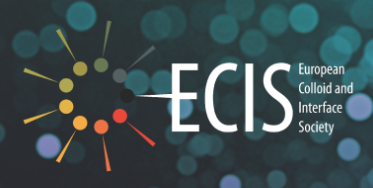
Newsletter Committee Opening
We are currently looking for a member of the Newsletter Committee. This is an ideal position for research students or ECRs who would like to be involved in the community. It involves collating articles received from members for the newsletter. If you are interested or have questions please contact us at: acis.enquiries@gmail.com
NMR Surface Relaxivity in a Time-Dependent Porous System
We demonstrate an unexpected decay-recovery behavior in the time-dependent 1H NMR relaxation times of water confined within a hydrating porous material. Our observations are rationalized by considering the combined effects of decreasing material pore size and evolving interfacial chemistry, which facilitate a transition between surface-limited and diffusion-limited relaxation regimes. Such behavior necessitates the realization of temporally evolving surface relaxivity, highlighting potential caveats in the classical interpretation of NMR relaxation data obtained from complex porous systems.
https://doi.org/10.1103/PhysRevLett.130.126204
Neil Robinson, Razyq Nasharuddin, Einar O. Fridjonsson, and Michael L. Johns
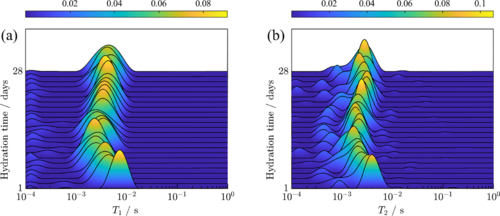
Effect of Cholesterol on Biomimetic Membrane Curvature and Coronavirus Fusion Peptide Encapsulation
Biomimetic cubic phases can be used for protein encapsulation in a variety of applications such as biosensors and drug delivery. Cubic phases with a high concentration of cholesterol and phospholipids were obtained herein. It is shown that the cubic phase structure can be maintained with a higher concentration of biomimetic membrane additives than has been reported previously. Opposing effects on the curvature of the membrane were observed upon the addition of phospholipids and cholesterol. Furthermore, the coronavirus fusion peptide significantly increased the negative curvature of the biomimetic membrane with cholesterol. We show that the viral fusion peptide can undergo structural changes leading to the formation of hydrophobic α-helices that insert into the lipid bilayer. This is of high importance, as a fusion peptide that induces increased negative curvature as shown by the formation of inverse hexagonal phases allows for greater contact area between two membranes, which is required for viral fusion to occur. The cytotoxicity assay showed that the toxicity toward HeLa cells was dramatically decreased when the cholesterol or peptide level in the nanoparticles increased. This suggests that the addition of cholesterol can improve the biocompatibility of the cubic phase nanoparticles, making them safer for use in biomedical applications. As the results, this work improves the potential for the biomedical end-use applications of the nonlamellar lipid nanoparticles and shows the need of systematic formulation studies due to the complex interplay of all components.
https://doi.org/10.1021/acsnano.3c01095
Izabela Milogrodzka, Duy Tue Nguyen Pham, Gopal R. Sama, Hajar Samadian, Jiali Zhai, Liliana de Campo, Nigel M. Kirby, Timothy F. Scott, Mark M. Banaszak Holl and Leonie van ‘t Hag
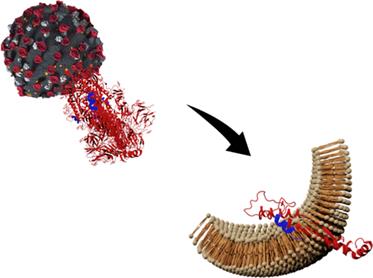
Opportunities
Lecturer in Physics Wanted at Queensland University of Technology!
The position is open to people who identify as women only. This is a program to improve the under-representation of women in STEMM and is an equal opportunity measure under section 105 of the Anti-Discrimination Act 1991. QUT strives to create a safe and inclusive workplace for people of all gender identities. QUT welcomes applications from candidates outside the greater Brisbane area. QUT may meet some travel and relocation expenses involved in the interview and employment commencing process.
The successful candidate will focus their teaching on providing high-quality learning experiences in QUT’s Bachelor of Science (major in physics), Bachelor of Science (Honours), Bachelor of Science Advanced (Honours) and to students in related disciplines such as engineering and health sciences. The appointee’s research interests will ideally align with existing strengths in the School of Chemistry and Physics.
For further information about the position, please contact Associate Professor Dongchen Qi on +61 7 3138 2168; or for further information about working at QUT contact Human Resources on +61 7 3138 5000.
Research Assistant (Postdoctoral) - Biological Molecules in Ionic Liquids (RMIT University)
A 3-year Postdoctoral fellowship at RMIT University working in the group of Tam Greaves. The position will involve chemical synthesis, liquid handling robots, synchrotron experiments, and definitely ionic liquids/DES.
For more information or to apply: https://rmit.wd3.myworkdayjobs.com/RMIT_Careers/job/Melbourne/Research-Assistant--Postdoctoral----Biological-Molecules-in-Ionic-Liquids_JR24084-2.
Applications close 10th September.
Griffith University Opportunities!
We have openings for two PhD positions:
1. Resolving cavitation in prosthetic heart valves in biological fluids. In this position the candidate will specifically study influence of cavitation in a mechanical heart valve on itself and blood system, with a view towards assessing the usefulness of surface modifications in controlling cavitation performance and further to mitigate the damaging in prosthetic heart valves. It would be advantageous for the candidate to have previous experience in biophysics, biomedical engineering, biochemistry, or chemistry.
2. Computational modelling of cavitating nanobubbles and surface conditions contributing to boundary slip. In this position the candidate will study the detailed physics of the nanobubble cavitation and the influence of surface roughness and wetting ability on boundary conditions using systematic computational study. The candidate will use CFD and molecular dynamics simulations to work out the conditions that surface and fluid properties influence the flow and link the likelihood of nanobubble-induced cavitation to experimental conditions. The candidate will also conduct a set of simulations of the wall shear stress for different surface properties to estimate the slip lengths.
For project related enquiries please contact:
Dr. Hongjie An
Email: hongjie.an@griffith.edu.au
A/Prof Michael Simmonds
Email: m.simmonds@griffith.edu.au
For administration enquiries please contact:
Griffith Graduate Research School Email: hdr-scholarship@griffith.edu.au
Advertisement
Making the Invisible Visible: Tracking Nanoparticles is now Faster, Easier and more Accurate
It’s a well-known fact that size matters when a nanoparticle (NP) based drug is considered. Size will have a significant effect on pharmacokinetics or the drug’s ability and efficiency to reach its target in the body. It is also equally important to understand the concentration and the dosage of NPs loaded with the desired drug.
Synergy of Complementary Characterisation Techniques: NTA & DLS
Those familiar with the Malvern Zetasizer Dynamic Light Scattering (DLS) systems will appreciate it as an indispensable characterisation tool, which has continuously advanced for more than 40 years. Non-invasive back scattering technology grants excellent population statistics for an average size (by intensity) and polydispersity index. The addition of Multi-Angle Dynamic Light Scattering (MADLS) in the Zetasizer Ultra achieves a more complete data picture and builds on the established benefits of DLS like speed of measurement, ease of use and low cost of ownership.
Increased measurement repeatability and reproducibility with Machine Learning
Characterising NPs has never been so quick, easy and accurate. Powered by machine learning the NanoSight Pro automates your workflow so removes subjectivity and human error. Any level of user can generate extremely accurate and reproducible size and concentration data with very little effort and time needed. Its unique optical heart brings new dimensions to repeatable detection, delivering superior data quality. An upgraded temperature controller allows stress and aggregation studies to be performed at up to 70°C. Advances in fluorescence measurement provide powerful insights into sample specificity while opening new possibilities in diagnostic, biomarker analysis and therapy applications.
 |
Contact us for a free demonstration
ATA Scientific Pty Ltd
+61 2 9541 3500
enquiries@atascientific.com.au
Activities
Join our Awards, Communications, Conferences and Events Committees
ACIS needs its members to be actively engaged. Please let us know if you would like to be involved in the committees that will run the activities of the Society: Awards; Communications; Conferences and Events. Or if you would like to propose other activities we should be running. We especially invite students and early-career researchers to become involved. Please email your interest to acis.enquiries@gmail.com.
Visiting Scientist Register
Are you planning to host a visit by an outstanding scientist in the colloid and interface field? Why not let ACIS members know about the visit? We aim to keep track of visiting scientists, to facilitate their introduction to the Australasian scientific community. Please email details of the visit to acis.enquiries@gmail.com.
ACIS Membership
Please encourage your colleagues, students and industrial partners working in the field of colloids and interface to join us. General membership is $100 per annum. The membership year is from 1st March each year. Memberships paid after this date are valid until 28th February of the following year. More information is available on our website https://www.colloids-ausnz.au/.
 Use Our LinkedIn
Group to Tell People Your News
Use Our LinkedIn
Group to Tell People Your News
ACIS is now present on LinkedIn. Please join our LinkedIn group and post discussion items on job ads, conference calls, and interesting facts about the wonderful world of colloid and surface science.
 Or Tag your Friends and Colleagues
Or Tag your Friends and Colleagues
Share your next big breakthrough, job opportunity or beautiful science with the ACIS community by using twitter.com/colloids_AusNZ.
The Newsletter team signing off,
![]()
Christine Browne – christine.browne@monash.edu
![]()
Stuart Brown – s3399895@student.rmit.edu.au
